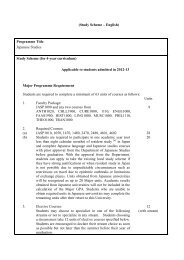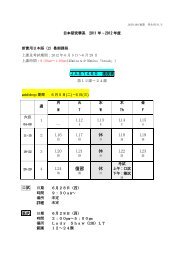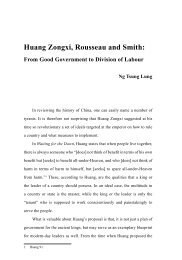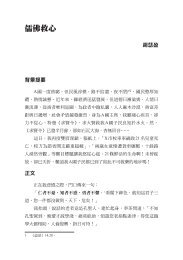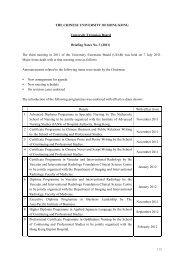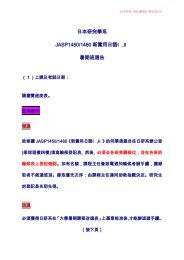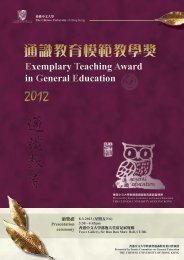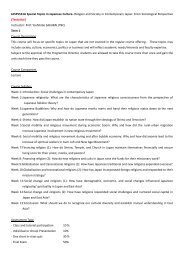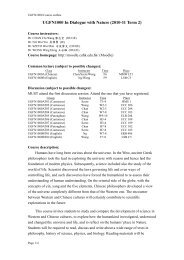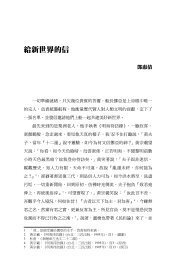ä¸è¼å ¨æ¸ - The Chinese University of Hong Kong
ä¸è¼å ¨æ¸ - The Chinese University of Hong Kong
ä¸è¼å ¨æ¸ - The Chinese University of Hong Kong
Create successful ePaper yourself
Turn your PDF publications into a flip-book with our unique Google optimized e-Paper software.
Carl Wieman, Why Not Try a Scientific Approach to Science Education 115answer questions posed during class. A computer records each student’sanswer and can display a histogram <strong>of</strong> those responses. <strong>The</strong> clicker efficientlyand quickly gets an answer from each student for which that student isaccountable but which is anonymous to their peers.I have found that these clickers can have a pr<strong>of</strong>ound impact on theeducational experience <strong>of</strong> students. <strong>The</strong> most productive use <strong>of</strong> clickers inmy experience is to enhance the Peer Instruction (PI) technique developed byMazur (1997), particularly for less active or assertive students.I assign students to groups the first day <strong>of</strong> class (typically three to fourstudents in adjacent seats) and design each lecture around a series <strong>of</strong> sevento 10 clicker questions that cover the key learning goals for that day. <strong>The</strong>groups are told they must come to a consensus answer (entered with theirclickers) and be prepared to <strong>of</strong>fer reasons for their choice. It is in these peerdiscussions that most students do the primary processing <strong>of</strong> the new ideas andproblem-solving approaches. <strong>The</strong> process <strong>of</strong> critiquing each other’s ideas inorder to arrive at a consensus also enormously improves both their ability tocarry on scientific discourse and to test their own understanding.Clickers also give valuable (albeit <strong>of</strong>ten painful) feedback to the instructorwhen they reveal, for example, that only 10 percent <strong>of</strong> the students understoodwhat was just explained. But they also provide feedback in less obvious ways.By circulating through the classroom and listening in on the consensus-groupdiscussions, I quickly learn which aspects <strong>of</strong> the topic confuse students andcan then target those points in the follow-up discussion. Perhaps even moreimportant is the feedback provided to the students through the histogramsand their own discussions. <strong>The</strong>y become much more invested in their ownlearning. When using clickers and consensus groups, I have dramatically moresubstantive questions per class period—more students ask questions and the



